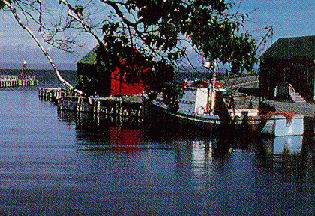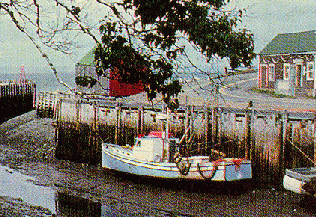
"cool math site of the week" 04/23/01

| Fourier Analysis of Ocean Tides I |

"cool math site of the week" 04/23/01 |
The United
States National Oceanic and Atmospheric Administration (NOAA) has an
excellent site: About Water Levels, Tides and Currents.
Dean Pentcheff's WWW
Tide and Currect Predictor gives today's tides for many locations. The
NOAA gives One year
predictions for a large number of U.S. sites. My main reference for
this column has been
Paul Schureman, Manual of Harmonic Analysis and Prediction of Tides, U.S. Department of
Commerce, Coast and Geodetic Survey, Special Publication No. 98, U.S. Government Printing Office,
Washington, 1958 (reprinted May 1988).


Going into or out of a harbor, or anchoring near a shore, you need to know in advance about the behavior of the tide. Here is what happened to Julius Caesar when he first landed in Britain, in 55 B.C. In his own words:
| ``That night happened to be the night of a full moon, when the Atlantic has the highest tides, and we did not know this. So the longships, which had been pulled up on the beach, were swamped, while the supply ships, moored to anchors, were tossed about by the storm; there was no way for us to control the situation or to help. Many of the ships were broken up, and the rest of them, having lost lines, anchors and the rest of their equipment, were useless for sailing. As was inevitable, this produced a great disquiet in the army. There were no other ships to take them back, everything was lacking that could be used for ship repair, and there was no provision of wheat for the winter, since all had understood that we would be wintering in Gaul." more in English, more in Latin. (Gallic War IV, 29) |
The tide is caused by the pull of the sun and the moon on the oceans, and the rotation of the earth, but its exact pattern at any particular spot on the coast depends on the shape of the coastline and on the profile of the sea floor nearby. So even though the forces that move the tide are completely understood, the tides at any one spot are essentially impossible to calculate theoretically. What we can do is record the height of the tide at that spot over a certain period of time, and use these measurements to predict the tides at that spot in the future.
This process is of mathematical interest, because the tidal record is not periodic.
The tidal force is governed by a small number of astronomical motions which are themselves periodic, but since the various frequencies have no whole-number ratios between them, the whole configuration never repeats itself exactly. Nevertheless, a geometric analysis of the problem shows that the tidal force can be expressed as a finite sum of periodic functions whose frequencies are known (they are in fact small integral linear combinations of the astronomical frequencies). Once this is established, Fourier analysis can be applied to the tidal record from any port using this finite number of frequencies as a basis.
Modern tidal analysis and prediction in all its mathematical and mechanical detail is due to Sir William Thomson (later Lord Kelvin), around 1867. The theory rests on earlier work by Laplace, Young and Airy.
This is the first of three columns on the subject. This one treats the geometric analysis mentioned above. Part II will cover the Fourier analysis of the tidal record. Part III will examine the problem of synthesis, and in particular the tidal predicting machines devised by Kelvin and his collaborators. These mechanisms, monuments of 19th-century ingenuity, were only relatively recently (1965) replaced by digital computers in preparing the official U.S. tide predictions.
--Tony Phillips
Stony Brook
|
|
|
© Copyright 2001, American Mathematical Society |